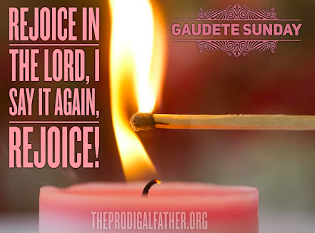
Aristotle lived a few hundred years before Christ. He was the one who made a framework for what it is to tell a story. He said in a story there are three parts: a beginning, a middle, and an end. Think about that. The three parts are: a beginning, a middle, and an end. In Aristotle’s time, a beginning was called a protasis. This basically meant an introduction. The epenthesis was the middle -the main action of the story; the third and final part, was the catastrophe. That was the end. The word explains itself.
All stories in that time ended with a catastrophe. Think about somebody dying or some terrible thing happening. That is the final big wow. That is the conclusion. However. that is not our story. That is not the Catholic story or the Christian story. Our story is very different than that. This kind of storytelling prevailed until the First Coming of Christ. During the Renaissance Period, the kind of storytelling that we are a little bit more used to be the new norm.
The third part, as you may know, is the climax. That is the epicenter of the story. The pinnacle of the story. The climax for us is The Crucifixion. The passion, death, and Resurrection of our Lord. That is the climax. Christ on the cross, suffering, dying and rising is the third part. You have the beginning, the exposition; the rising of the action, which is the birth; the climax, which is the passion, death and Resurrection; and then the following action. That is the fourth part.
After you have had this climax, you have some time of just getting to enjoy all that has happened. The following action is the part of Salvation history that we are living in now. We have already experienced the climax. Christ has already come, suffered, died and risen. We are now experiencing the effect of that.
The truth is, in Advent, there are three Advents: the Birth of Christ, which they waited for thousands of years; the Second Advent is Christ coming into our hearts now; and the third Advent is the Second Coming. We are in that part now. We are in the following action, the waiting for the Second Coming, the waiting for Christ to come into our hearts.
The following action is very interesting because during that time, if you are a good storyteller, there will be some kind of final suspense. There will be something in which the final outcome is in conflict. There is some kind of doubt about the final outcome. We are living in that final suspense, where there is some conflict in our lives.
Advent is a time for Confession, too. So if you have not been to Confession in awhile, I encourage you to do that. I was hearing confessions the other day. I will not tell you what I heard. But one of the ladies had been away from the church for 20 years, and had not gone to confession. She came back. Usually when people are gone for a long time, I’ll say, “Well, what brought you back?” If you think about this following action, this whole conflict or this tension near the end, she said to me – after she thought about it for a second, “I think what brought me back was probably watching too much Fox News.” I said, “What do you mean?” And she said, “I’ve been watching too much Fox News, Father. It is all about ISIS and terrorism. I am afraid to get on a plane. I am afraid to go to big events.” She said, “I think the fear of mortality is what brought me back.” She is experiencing this reality of this final conflict before the end.
That is where we all are right now. We are in this stage of the following action. We have experienced the pinnacle. We have experienced The Resurrection of Christ. Now we are experiencing the after effects. But the end hasn’t happened yet. For Christians, the end does not end in catastrophe. That is not the end of the story. The end for us, as we heard in the Gospel today, is good news. The end is the Good News. The climax, the final coming to an end is actually a French word called “Denouement.” It means an untying of the knot. The tension comes to an end. There is an untying of the knot. That, for us, is the Second Coming. The final end to our story is Christ coming back into this world.

